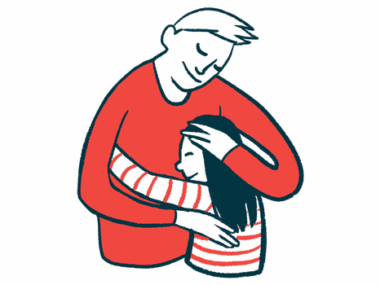Children with CMT should be screened for hip dysplasia: Study
Researchers warn of 'gross underestimate' of problem among young patients
Written by |

A team of U.S. researchers is calling for routine screening for hip dysplasia — when the bones in the hip joint don’t fit together correctly, causing instability — among children with Charcot-Marie-Tooth disease (CMT), after their work revealed it to be a common but underrecognized problem in young people with the inherited condition.
Based on the findings of their review study, the researchers, led by scientists at the Children’s Hospital of Philadelphia (CHOP), are urging that new testing protocols be put into place to routinely screen young patients with CMT for hip disease. The goal, according to the researchers, is to detect hip dysplasia in children and address it before it causes serious problems.
Noting that more research is needed to set up screening parameters, the team nonetheless urged that testing be started early.
“We recommend radiographic screening of asymptomatic patients somewhere between 4 and 10 years of age in order to identify those with dysplasia prior to the development of any joint damage,” the researchers wrote.
More work also is needed to assess the true prevalence of hip problems in people with CMT, the team noted.
The study, “Hip Dysplasia in Patients with Charcot-Marie-Tooth Disease: Unraveling an Underrecognized Condition,” was published in the Journal of the Pediatric Orthopaedic Society of North America.
Screening for hip dysplasia not often done for CMT children, review finds
Hip dysplasia, also called acetabular dysplasia or AD, is characterized by instability and hip pain due to an abnormally shallow hip socket. This problem has been reported in people with CMT, and also attributed to worsening muscle imbalance over time. However, there are no established guidelines for monitoring hip health in CMT patients. Further complicating matters, CMT symptoms like muscle weakness can make AD harder to pick up on.
To learn more, the CHOP team and a colleague launched a records review study to assess how hip problems might manifest in people with CMT.
“The purpose of this study was to describe the prevalence of hip disease and the types and outcomes of management in a cohort [group] of patients with CMT from a single large [specialized] care institution,” the researchers wrote. “Our overarching goal was to explore the utility of hip screening in CMT and the optimal age for doing so.”
The team noted that “it is generally recognized that CMT hips have a higher risk of AD,” but wrote that “the nature and extent of this risk remain poorly understood.”
Of more than 350 CMT patients who’d received care at CHOP, slightly more than 1 in 4 (27%) had ever undergone imaging of the hips. Among the 96 individuals — 27% of total patients — with hip imaging data available, 21% had AD in one or both hips. Symptoms of AD in these patients included limping, hip pain, and instability.
This works out to an overall prevalence of 6%, which is roughly in line with prior studies on the prevalence of AD, according to the team.
However, the researchers stressed that because most patients didn’t have their hips imaged, and there are no standard guidelines to look for AD in CMT patients, this is “likely a gross underestimate of the true incidence.”
Moreover, according to the team, even these findings of an estimated 6% of CMT patients having AD provide more than enough data to warrant screening for this problem. They noted that screening for AD can be done quite straightforwardly with radiographs, or X-rays, of the hips.
It would be ideal to address hips earlier in the disease process when more straightforward [interventions] could be effective.
Among the patients whose data were reviewed, the age at AD diagnosis was 11 years. Most cases of AD were treated with surgery, which was successful in addressing this hip dysfunction in nearly all cases.
The data are not sufficient to reliably inform age guidelines for screening for AD, the team noted. But they said that screening before age 10 might help to identify AD before substantial hip damage develops. Going a step further, screening for hip dysplasia in very young children with CMT — those younger than age 4 — “would greatly simplify any potential surgical intervention,” the scientists wrote.
“It would be ideal to address hips earlier in the disease process when more straightforward [interventions] could be effective,” they wrote.
The scientists noted that this study was limited by its sample size, so additional research will be needed to validate the findings and develop optimal guidelines for screening and treating AD in CMT patients.
“Further (ideally prospective) work is necessary to determine the true prevalence of hip dysplasia in patients with CMT, confirm our recommendations for screening, and determine the optimal course of treatment,” the team concluded.






